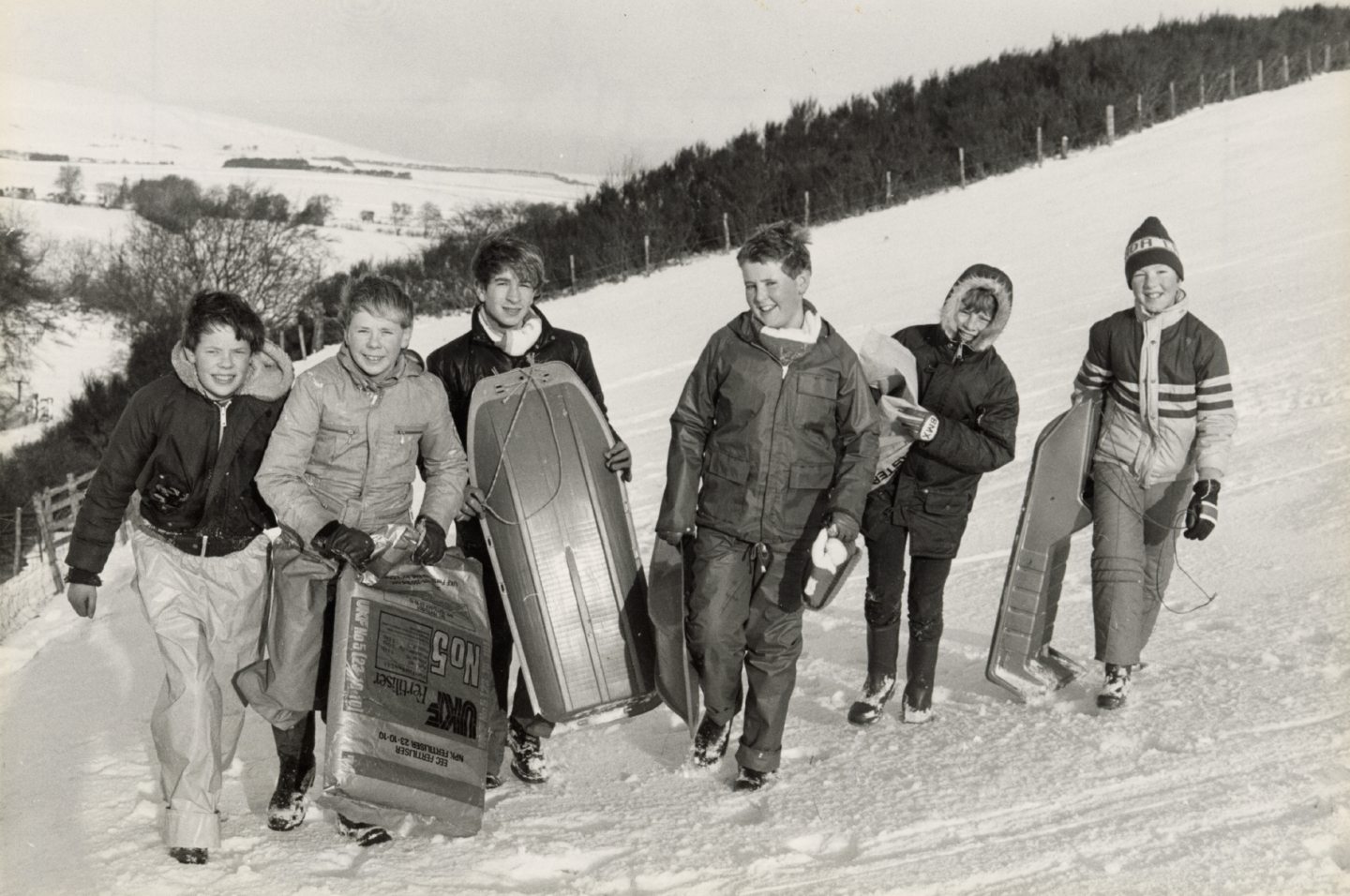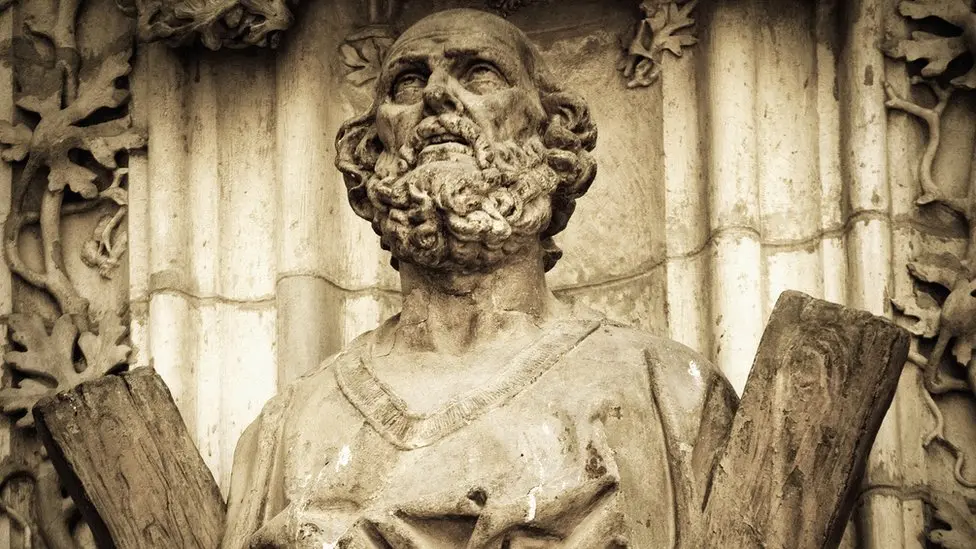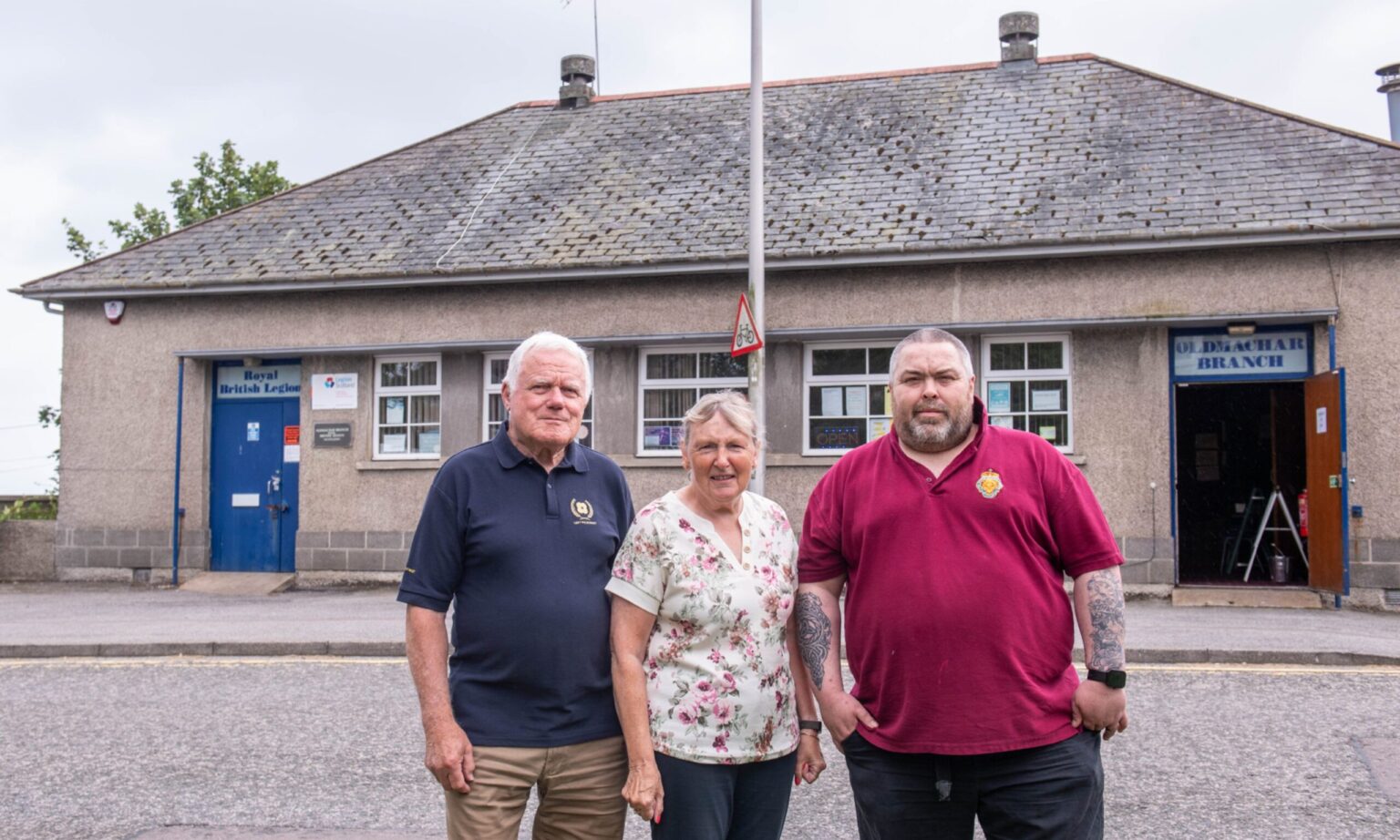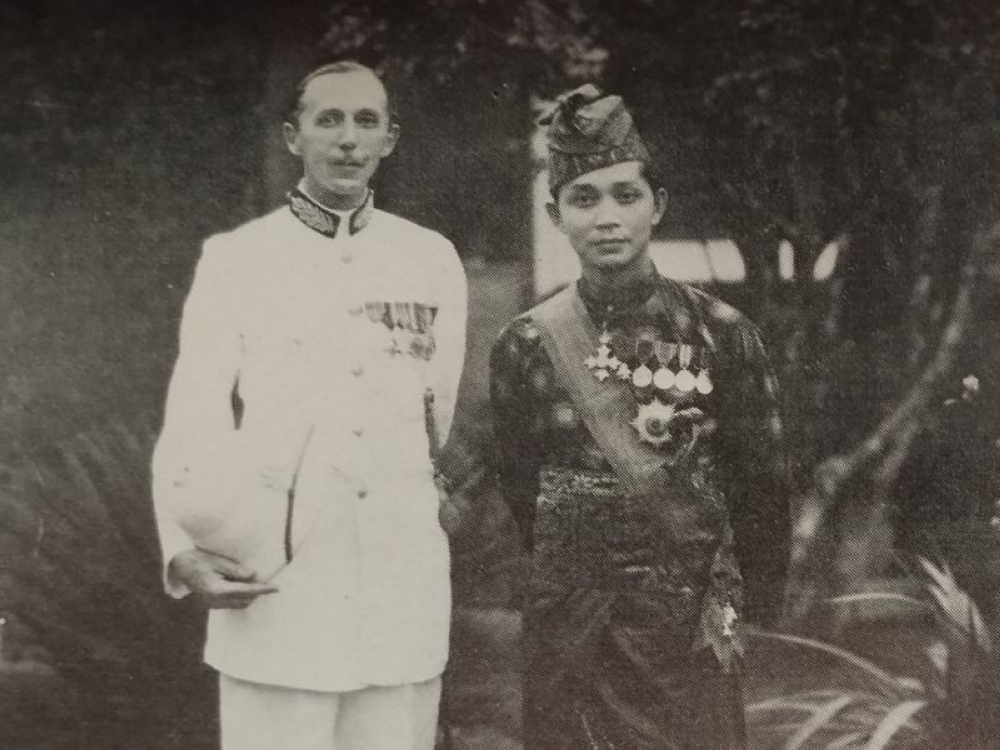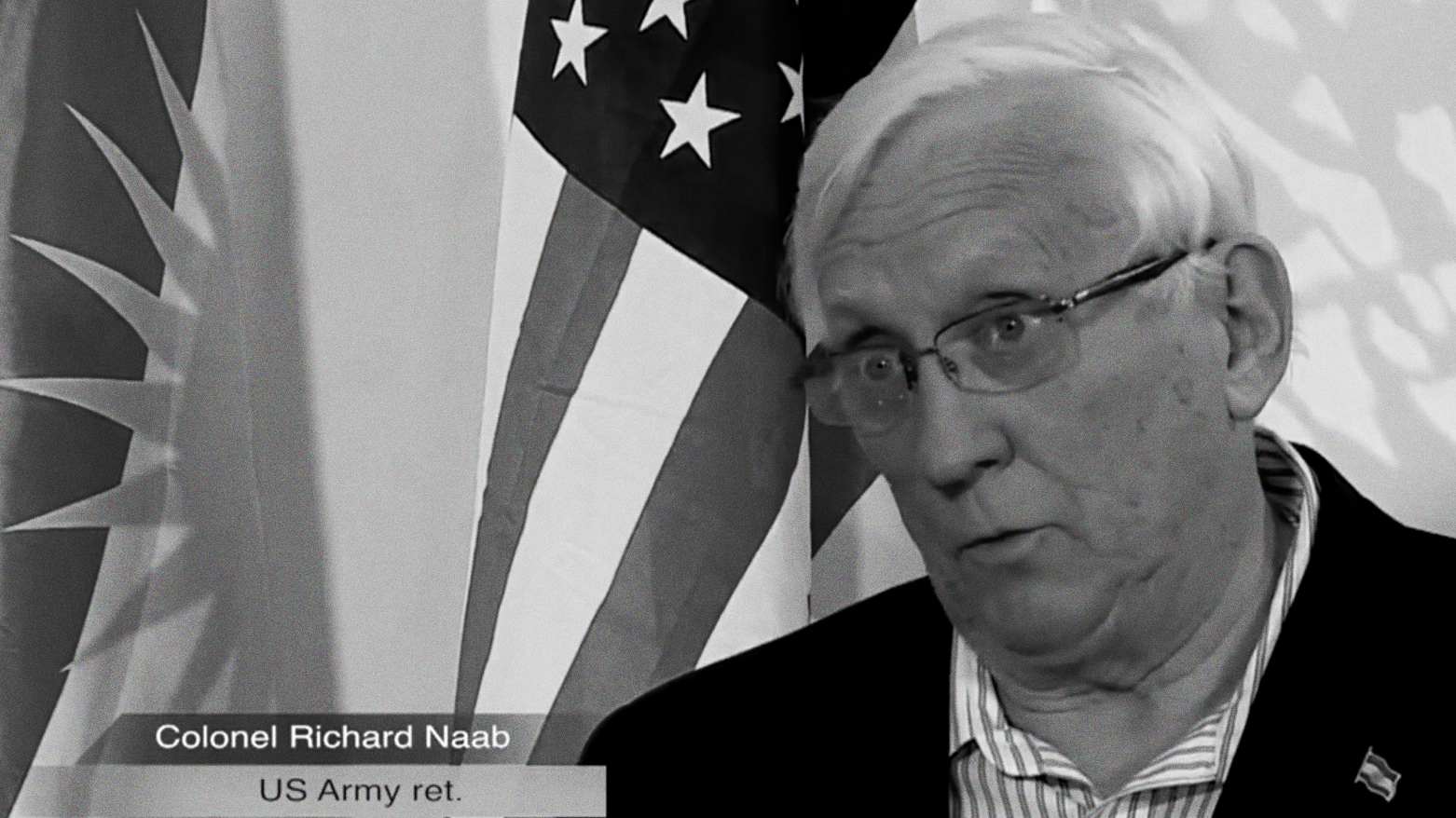Sharing the story of compassion behind the Hungry Ghost Festival through cute art
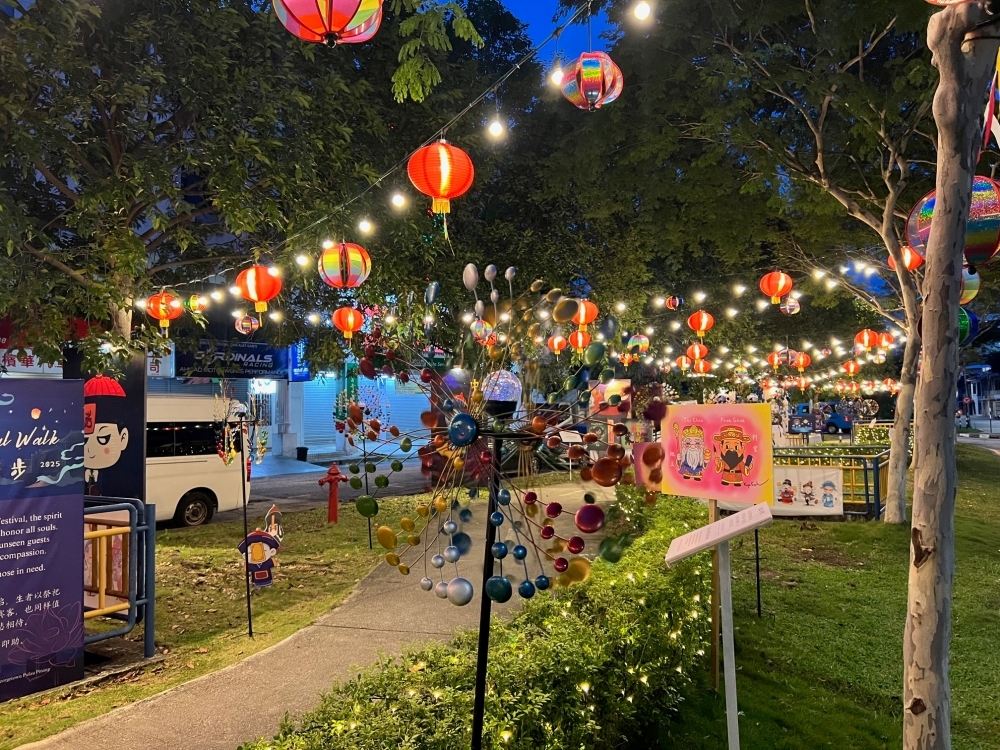
GEORGE TOWN, Sept 1 — Do not go out at night.
Do not step on the offerings left by the road side.
Do not open an umbrella inside your house.
Do not place your child on the table meant for offerings to Tai Su Yeah.
The annual Hungry Ghost Festival often comes with a list of warnings of what not to do during this month or you might risk being haunted by the wandering spirits.
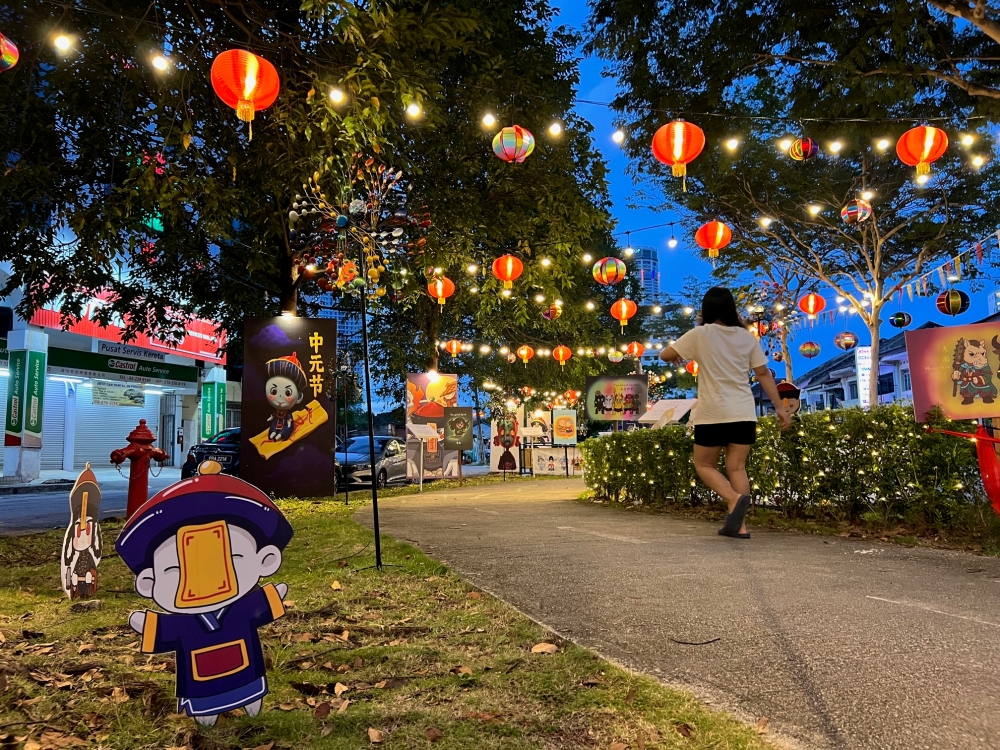
According to local Chinese folk lore, the seventh month of the Chinese lunar calendar is the month when the gates of hell are open to let spirits wander the human realm.
This month often sees believers making offerings such as placing food, burning joss paper and lighting candles by the roadsides to appease these wandering spirits.
Altars to honour Tai Su Yeah, the King of Hell, were also set up along with makeshift stages for Chinese opera shows and koh-tai (modern live concerts) to provide entertainment to the wandering spirits and the deity.
Often forgotten between the warnings of taboo activities during this month and the offerings that many thought were made to appease the spirits, were the main messages behind these rituals - compassion, remembrance and respect.
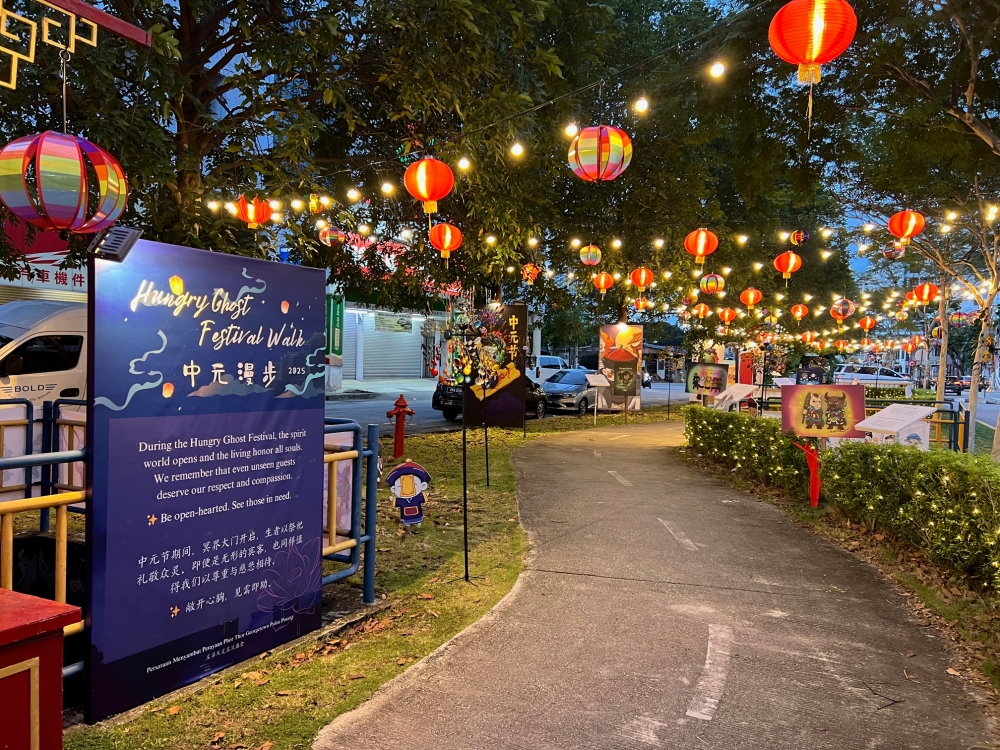
Menara Perdana Phor Tor Society chairman Kevin Lim said the month-long festival is about compassion for the wandering spirits to help them to move on.
“Many of these wandering spirits are still around because they have not let go of their resentment so this month is to make offerings to them, to help them resolve their resentment so that they can move on and be reborn,” he said in an interview with Malay Mail.
He said the grand celebration on the 15th day of the month was actually to celebrate the birthday of Di Guan Da Di, the ruler of earth, who pardons sins, according to Taoist beliefs.
“On that day, the deity will appear to offer forgiveness to the wandering spirits so the grand celebration is not only for the deity but also focused on repentance and releasing karmic debts to deliver the spirits from their suffering,” he said.
The Hungry Ghost Festival used to be celebrated in almost every residential area in George Town, but the number of phor tor events have dwindled over the years.
Lim said they needed to attract the younger generation so that they can continue holding the cultural practice in years to come.
Instead of focusing on the fear-inducing and taboo factors behind the festival, he said last year, they started by decorating a section of a landscaped pedestrian walkway along Jalan Gurdwara with cute comic-style illustrations of jiang-shi (Chinese vampires), fairy lights and lanterns surrounding an altar set up for Tai Su Yeah.
“It drew quite a lot of attention so this year, we decided to do this again with cute illustrations by artist, Kopi Soh, and brief explanations on the festival,” he said.
The short section of the walkway was transformed into an exhibit on the Hungry Ghost Festival with bilingual boards featuring brief explanation on the festival, the deities and the types of spirits.
Lim said they had also put up colourful little windmills in ode of the local name for the road, hong chia lor (Hokkien for Windmill Road).
“Nezha even came to visit, through a medium, to say that he liked the windmills and asked that we put up more,” he said.
As with Taoist beliefs that images might invite spirits to dwell within them, he said a medium in trance of Tua Pek Ya (the White Impermanence deity) had sealed the images displayed along the walkway with spells using cinnabar ink.
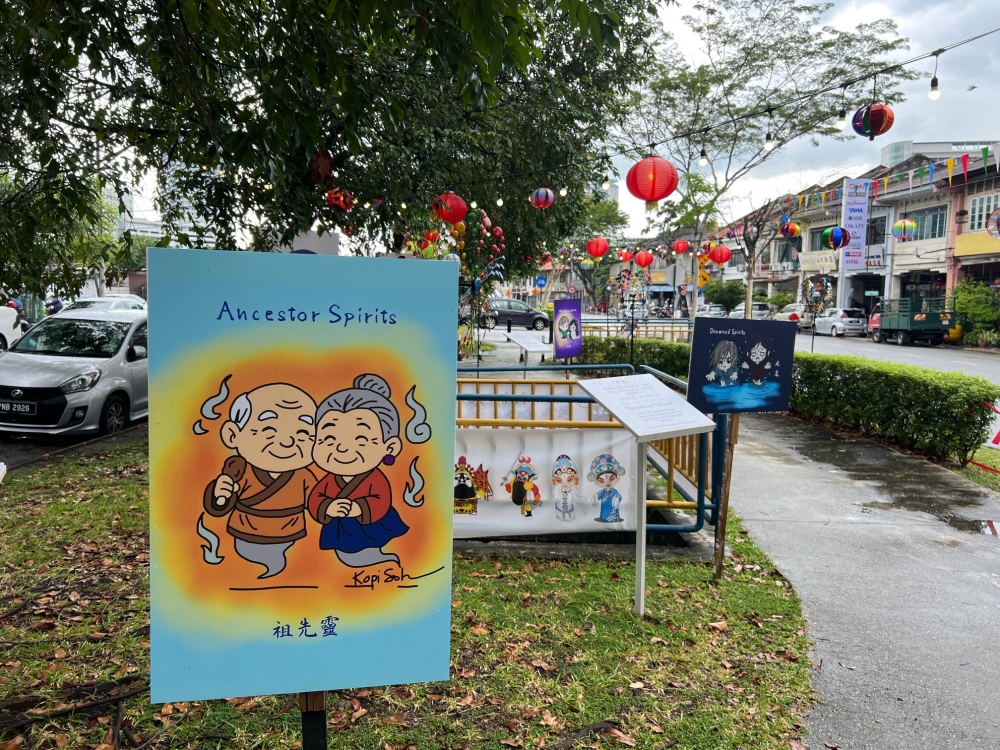
Kopi Soh, a Penang-born artist, drew 10 of the artworks that featured the different types of spirits along with the deities linked to the festival such as the five ghost generals, tay choo kong, pnua gnua, the horse-face and the ox-head.
In an interview with the artist, Kopi Soh said she used to be afraid of the festival due to the taboos and warnings growing up.
“But as I learned more, I began to see this whole world of deities and rituals in a new light,” she said.
She said the festival is not about fear but about compassion, hospitality, and remembrance.
When she was invited by the Menara Perdana Phor Thor Society to feature her art in the festival, she saw it as an opportunity to shift perspectives.
She wanted to help people, especially the younger generation, understand that this month is not only about avoiding ghosts, but also about showing kindness and approaching this festival with empathy instead of fear.
When asked about the inspiration behind her cute-style of art for the festival, she said it started with her own shift from fear to understanding.
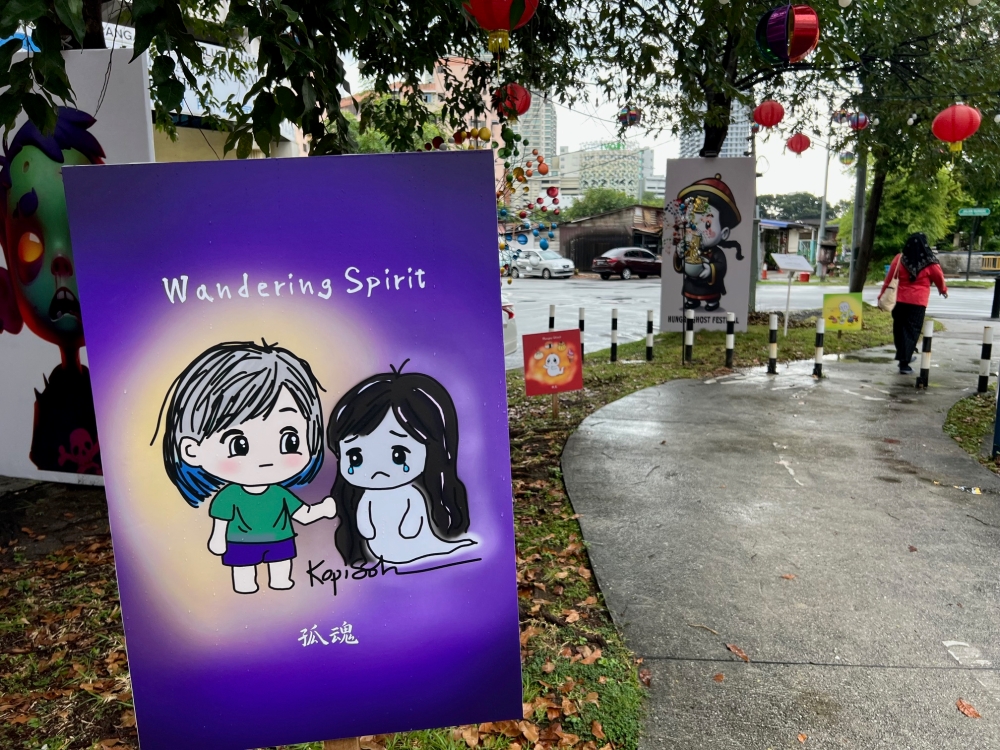
“For so long, spirits were painted only as frightening figures, but gradually, I began to sense that they also carry emotions we all recognise such as loneliness, hunger, sadness, or longing for love,” she said.
“With guidance from the deities and encouragement from the organisers, the art took shape in a softer, cuter style,” she added.
She said the cute style was not to make light of the spirits, but to invite people to look again so that they do not see them as monsters, but as beings with stories and struggles who are deserving of empathy rather than fear.
She said when she was invited to contribute her art to the festival to keep the Taoist spirit alive by connecting with the younger generation, it resonated with her.
“It reminded me of how lost and confused I once felt at temple rituals, and how my faith was only restored later in life through my encounter with Nezha,” she said.
The artist had once met with a medium in trance with Nezha Sam Taizhu that made her connect deeply with Taoist rituals and made her realise that the unseen world is not about fear but about compassion, guidance, and connection.
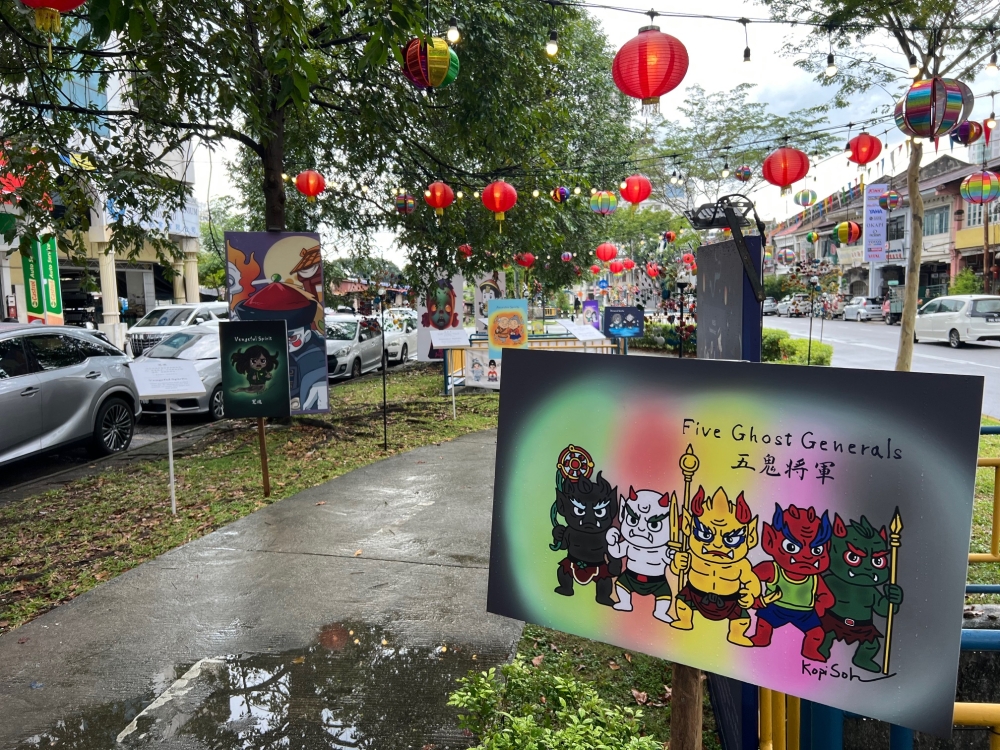
She said the invitation to contribute her art felt almost like the gods are giving her a role to play, to help others see this festival with new eyes.
Kopi Soh said she had to attend a conference overseas just after being invited to contribute to the festival so she spent her time away drawing whenever she could.
“The preparation went beyond just drawing. It involved reflecting on the types of spirits, understanding their stories, and thinking carefully about how to present them in ways that carry both respect and compassion,” she said.
She said she retuned to Penang just in time for the start of the festival.
“For me, this wasn’t just an art project; it was also a spiritual journey and strangely in many ways, it felt connected to my research on flourishing and well-being,” she said.
She said each ghost she drew reminded her of something very human, hunger, sadness, longing, even anger and resentment.
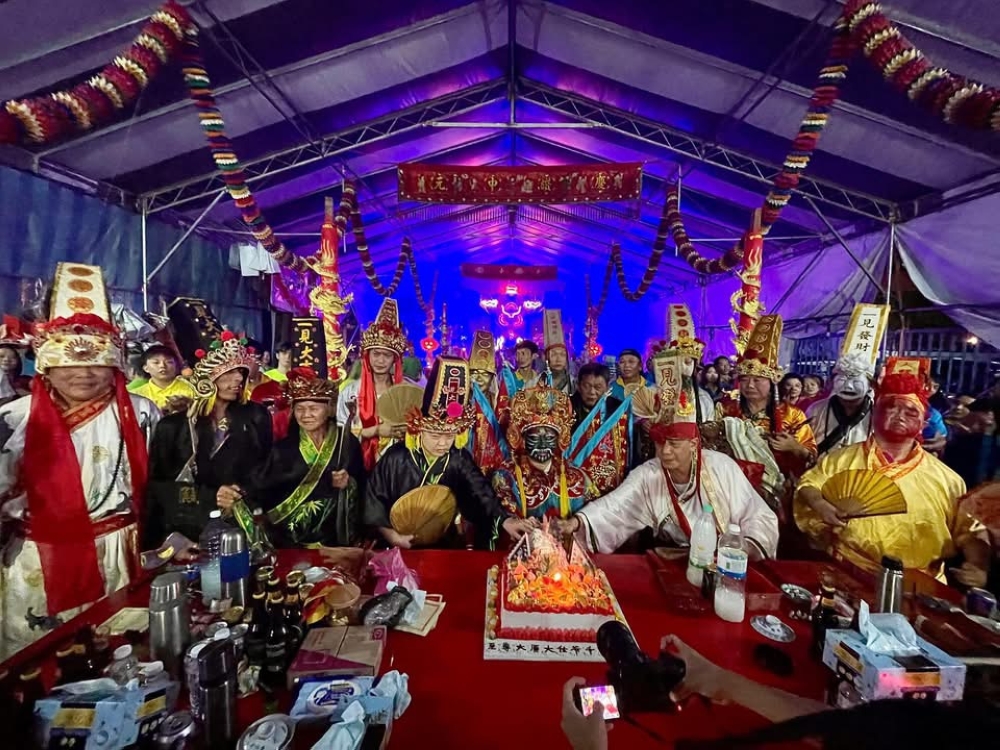
“Presenting them in this way was my way of showing that the festival is really about hospitality and empathy for those who no longer have a voice,” she said.
The Hungry Ghost Festival this year started on August 23 while the grand celebration on the 15th day will be held on September 6.
The Menara Perdana Phor Tor Society will also be throwing a grand celebration on the 20th day in honour of Tai Su Yeah’s birthday.
Just in front of the walkway, in a shophouse and sharing the same space as the Vroom Vroom Chicken Rice Shop, is a temple with Tai Su Yeah and Heong Lim Sian Kor (Immortal Lady of the Fragrant Grove) as the main deities at the altar.
Lim said all Taoist rituals for the festival are often led by the temple and its resident medium.
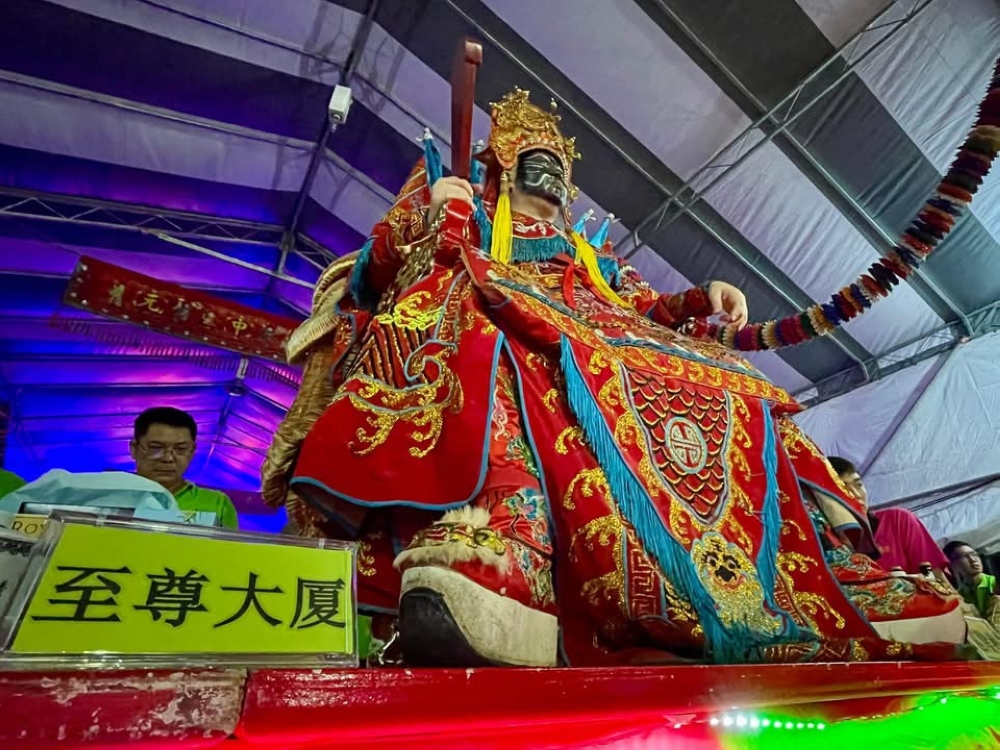




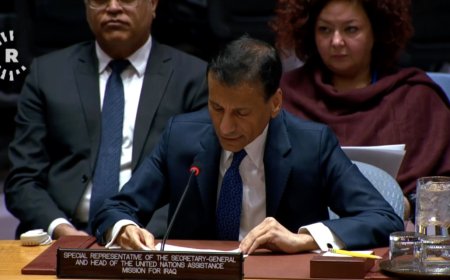




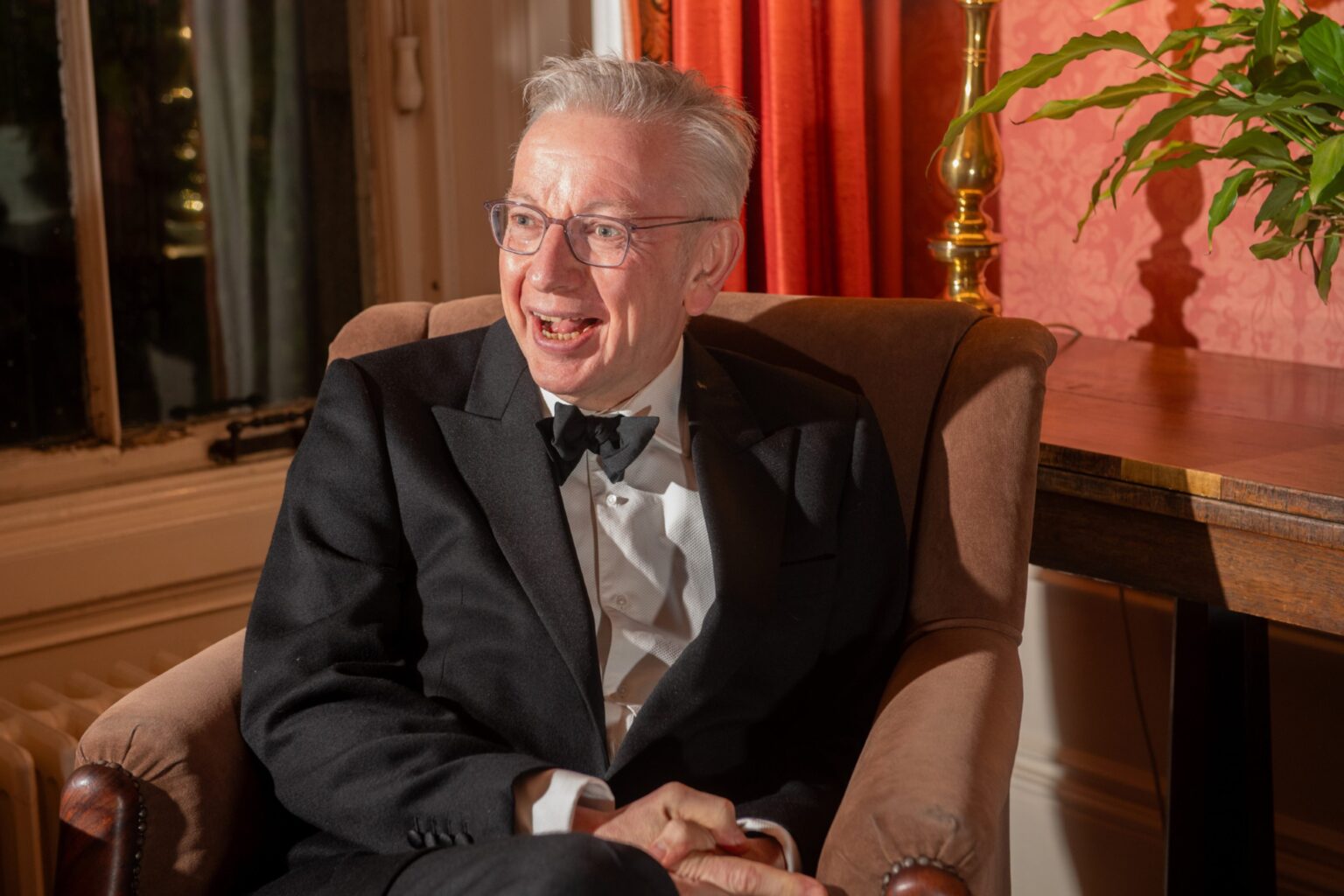





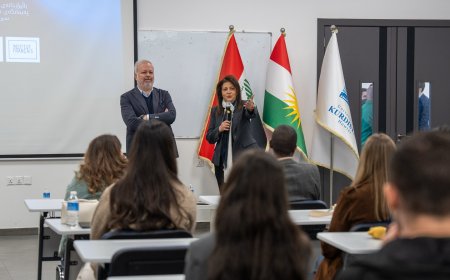

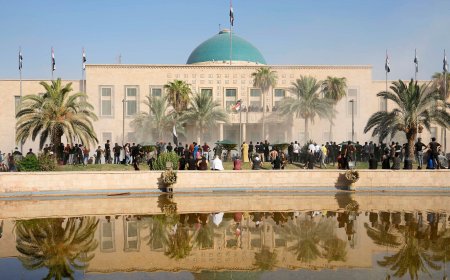

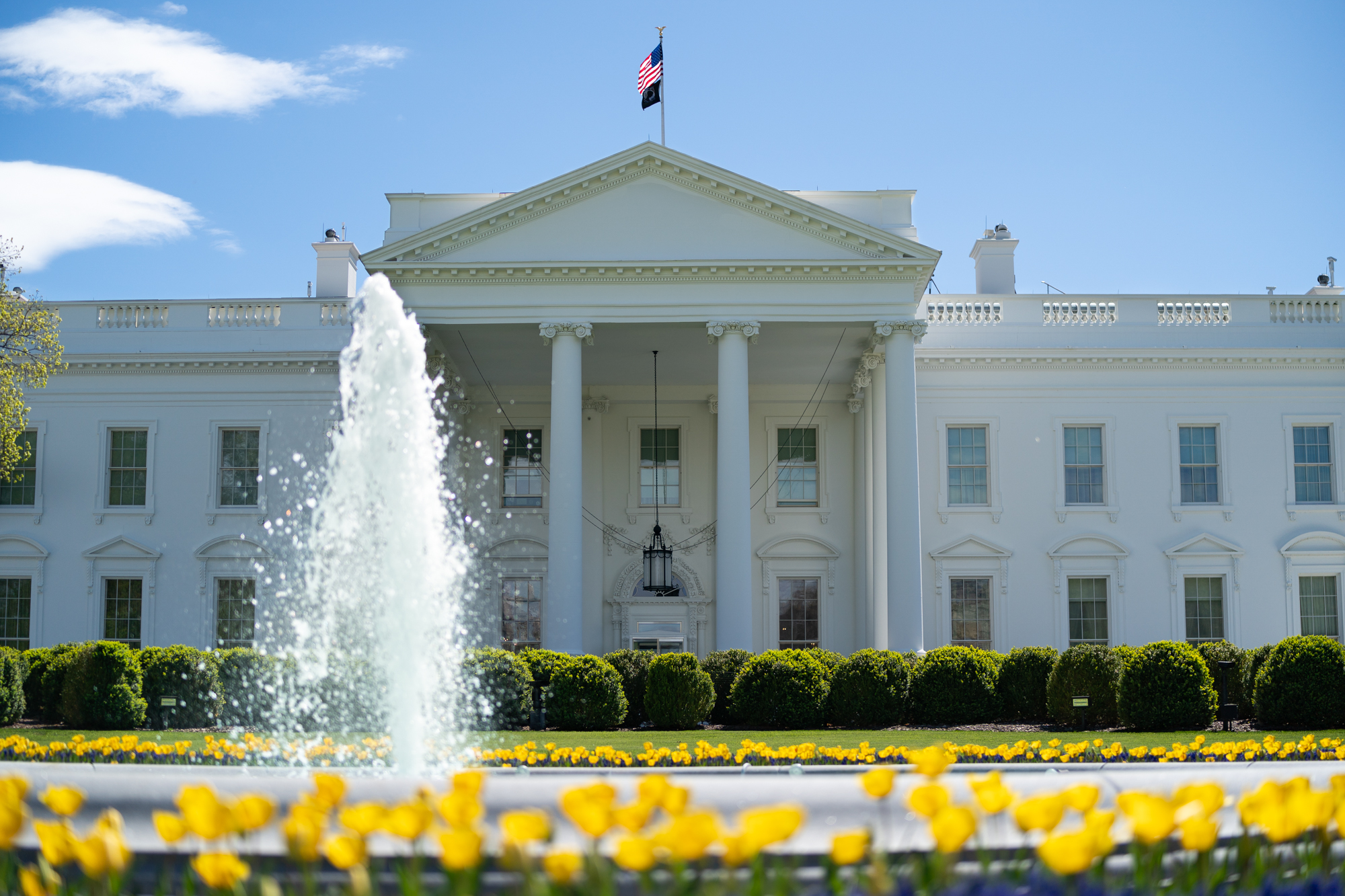
/file/attachments/orphans/1000146612_845134.jpg)









